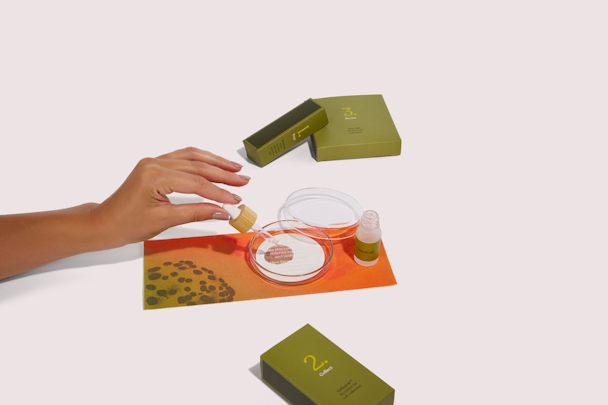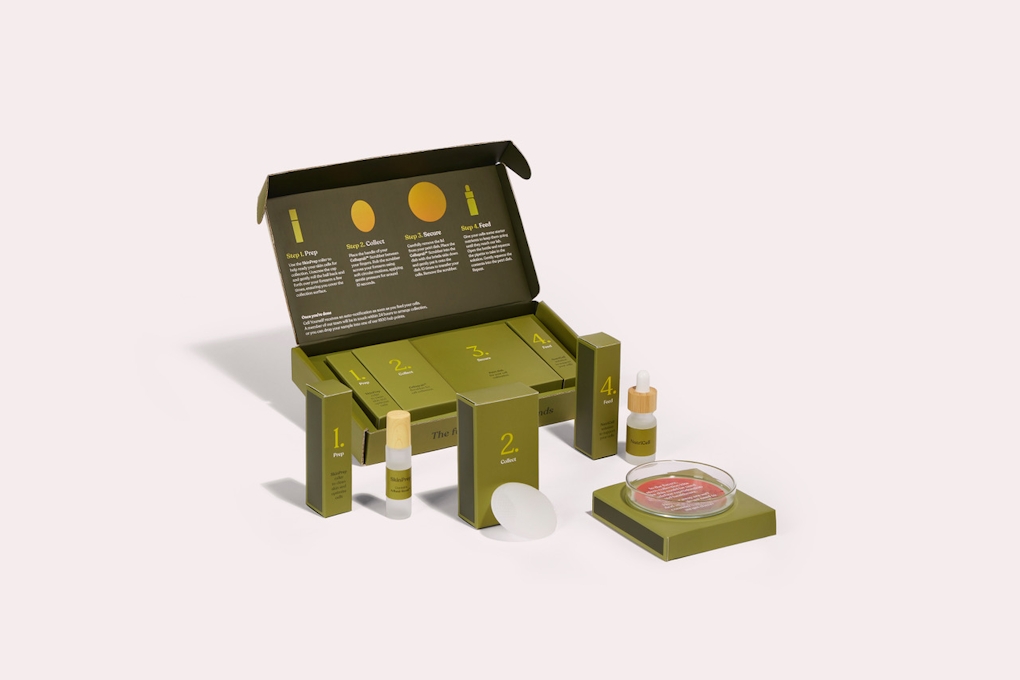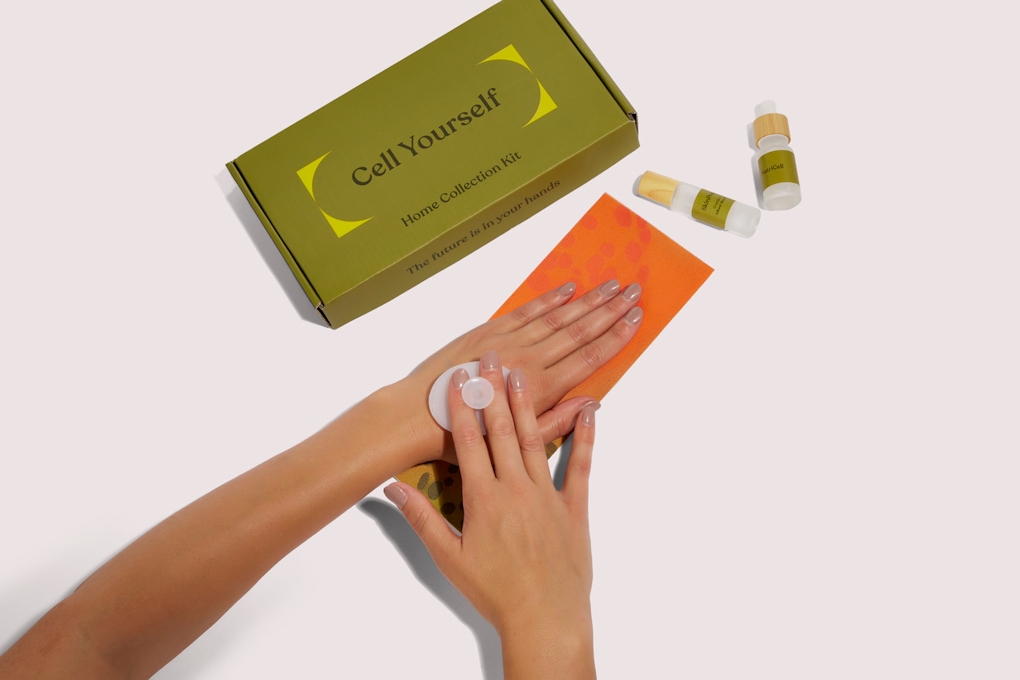How can designers help businesses and brands ask big ethical questions?
Amanda Gore – director of experiential design studio The Liminal Space – levels on how brands can benefit from investing in design thinking by imagining a near future where they take a completely new perspective on challenging societal issues to offer consumers something that’s currently out of reach.

The Liminal Space has thought about how stem cell advancements could lead to bespoke services. / The Liminal Space
As we begin 2025, it’s clear that the world is on the brink of profound change. Advances in science and technology are rapidly pushing the boundaries of what we once thought possible. Scientists are already able to grow mini-brains in labs, and soon we may be able to generate human eggs from cells in our own bodies or even monetize our biological matter. These innovations, alongside shifting social dynamics, are poised to redefine fundamental aspects of human existence. We’ve already seen a preview of this in the way drugs like Ozempic are reshaping our relationship with food, consumption, even our own identities.
But what does this mean for brands? Everything. The coming years will require us to navigate difficult and uncomfortable conversations. In a world where purpose increasingly drives consumer behavior, brands have the opportunity to adopt a new role: creating spaces for dialogue around the big issues shaping our future. The brands that succeed will be those that lead the charge in facilitating these conversations.

This is not a new version of corporate advocacy. Over the past two decades, we've witnessed brands take stands on a variety of ethical and social issues. For instance, Nike’s 2018 campaign featuring footballer and civil rights activist Colin Kaepernick made a bold statement on police brutality and racial justice. But as the world grows more polarized, brands will need to exercise caution and nuance in their approach. Activism can be divisive and fraught with complexity. Dove, for instance, found its longstanding activism on inclusion challenged this year by Greenpeace, which accused the brand of hypocrisy due to its plastic production. Even the most trivial topics—such as sandwich fillings—have become politicized, diverting energy from deeper societal issues where debate is desperately needed.
Consumers are turning to brands for solutions to global issues
The future is not just about making statements, it’s about engaging in thoughtful, inclusive conversations. Brands are uniquely positioned to facilitate this dialogue. They can potentially bring together diverse communities whose interests extend beyond consumerism to existential concerns. Some brands now hold more wealth and influence than entire countries. As governments struggle to address issues like discrimination or climate change, consumers are increasingly turning to brands for solutions. Studies back this up: one showed that over three-fifths of directors believe businesses shouldn’t exist solely for profit; another showed that 75% believed businesses have a duty to intervene in societal matters where governments fall short.
But fielding debate is a delicate line for any business and brand to tread. This is where design thinking becomes a powerful tool, a way to approach existential and ethical questions in non-judgmental ways. When effective it can help people move beyond the fight or flight responses that contentious topics often provoke. Interactive approaches help brands to create environments where people feel safe to explore dilemmas with reflection, not confrontation. Instead of providing answers, they can ask: “What if?”
Want to go deeper? Ask The Drum
In my years of working with organizations on programs designed to stimulate dialogue, I’ve reflected on some of the most contentious topics, from abortion to aging. These are issues that, for decades, have sparked intense debate. However, the landscape of societal and ethical questions is shifting. Until recently, much of the debate centered around technologies and laws that were developed in the mid-twentieth century. Today, we find ourselves facing entirely new and complex questions, particularly in the realm of scientific innovation.

Recently, I worked with the London School of Economics and The Francis Crick Institute to help communicate groundbreaking stem cell research into a format relatable to the general public. Why? Because reproduction, healthcare, and even our fundamental notions of life itself, are on the brink of revolution. Many important questions will emerge, from the potential obsolescence of sperm for reproduction and its impact on our understanding of masculinity to the idea of creating bionic humans.
What growing your own organs might look like
Stem cell research and other emerging scientific fields are still largely unregulated. Public discourse is critical in helping to develop an eventual framework that considers the ethical implications of powerful technologies. But how can we connect people to a future that doesn’t yet exist? How can we help individuals grasp the potential impact of innovations that seem so far removed from their daily lives?
Advertisement
Our solution was Cell Yourself, a fictional healthcare product that allowed people to imagine what ‘cultivating’ their own cells and ‘growing’ new organs or biological tissue might feel like. This is a vision of a future where we might one day turn skin cells into life-saving organs, all from the comfort of our homes. Here a simple, gamified treatment made the complex science accessible. Social media Influencers from a range of backgrounds including medical professionals and people with personal experiences of infertility were invited to unbox the Cell Yourself kits, share their reactions with their audiences, and invite discussion with the public that might more usually be held by scientists and ethicists.
Advertisement
In another project, we created a pop-up shop that "sold" fictional beauty products linked to the growing trend of egg freezing, a technology that has significant implications for women’s reproductive rights and family planning. The experience encouraged the public to question societal narratives about whether women can truly “have it all”, and through playful touchpoints sparked a broader conversation about the intersection of science, choice, and societal values.
We’ve also helped an international toy brand to discuss the future of empowerment and created a public-facing forum with a nationwide clinic chain to address the coming evolution of sexual health. In all, we used design to make pressing societal conversations feel more relatable, inviting people to consider not only the role of technology in shaping our futures but also the ethical questions that come with it.
The age of businesses and brands playing it safe is over
The age of businesses and brands playing it safe is over. As society increasingly looks to brands for leadership where governments and institutions falter, their role in ethical debates becomes unavoidable. Success lies not in trying to ‘solve’ these debates but in connecting people across ideological divides, and in hosting a platform that can cater for specialists such as lawmakers or regulators as well as the public.
Designers are pivotal to this transformation. By crafting thoughtful, interactive experiences, they can help brands navigate complex topics with authenticity and empathy, especially in an era of corrosive communication. The future belongs to those who dare to ask — and help others ask — the questions that matter most.